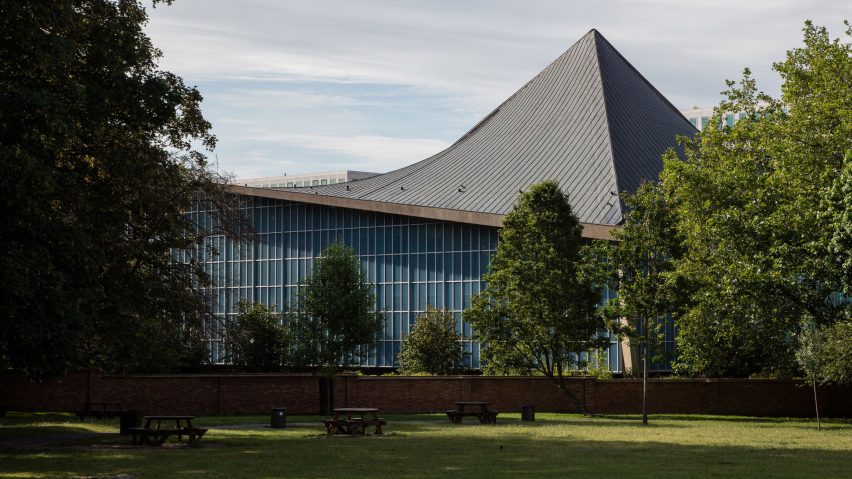The transformation of London's former Commonwealth Institute into a new home for the Design Museum has resulted in the loss of a "magnificent post-war masterpiece", according to the Twentieth Century Society.
The UK heritage body has added the 1960s building – which was overhauled by OMA and John Pawson – to its growing Lost Modern list, a "hall of shame" recording important 20th-century buildings that have been destroyed or demolished.
It claims the structure, which had a Grade II* heritage listing before the conversion, has been ruined as a result of an dysfunctional planning system.
"All that is left of this magnificent post-war masterpiece is the roof structure over the central pavilion, which had to be propped up during reconstruction as everything beneath it was demolished," stated Catherine Croft, director of the Twentieth Century Society.
"So to all intents and purposes this Grade II* building has been lost," she said.
Located on Kensington High Street in west London, the Commonwealth Institute was designed by the Robert Matthew and Stirrat Johnson Marshall partnership, better known as RMJM. Its features included a copper-covered, hyperbolic parabaloid roof, as well as tiered floors and sculptural balconies.
The building opened in 1962. But problems with the structure soon arose, resulting in a series of expensive repairs, and it was eventually sold.
Architects aren't to blame for the loss of the building
It sat derelict for eight years before OMA and Pawson were appointed to convert the building into a new museum. Their transformation, which was completed in late 2016, saw the exterior kept intact, but the interior completely rebuilt.
OMA and London firm Allies and Morrison also added three limestone-clad apartment blocks to the site to help fund the project.
However Croft hasn't blamed the Design Museum or the architects for the loss of the building. She has instead pointed the finger at the local council and at Historic England, the government body responsible for protecting the country's built heritage.
"The interior central podium, flying staircase, elliptical balconies, ancillary library block and verdant landscaping with flagpole walkway were as integral to the design of the Commonwealth Institute as the hyperbolic parabaloid roof, yet they have all been lost," she said.
"This is not the fault of the Design Museum or their architects, but The Royal Borough of Kensington and Chelsea and Historic England who both failed to ensure it got the protection it deserved," she continued.
"The site is now swamped by luxury flats. This was definitely not the appropriate conservation-led approach that a Grade II* listed site of international importance deserved, especially one that is also a registered park and garden in a conservation area."
The building joins the growing Lost Modern List
The Commonwealth Institute is one of 10 new buildings that the Twentieth Century Society has added to its Lost Modern list.
Other new additions includes Pimlico Comprehensive School in London, the Brynmawr rubber factory in Wales and Gilbeys Gin HQ in Essex. These three were all heritage listed, but were demolished anyway.
"The most worrying aspect of these cases is that they demonstrate that even listing is not reliably protecting C20 buildings," said Croft.
The Twentieth Century Society first published the list in September 2017, with a total of 20 buildings. These included Robin Hood Gardens, the housing estate designed by Alison and Peter Smithson.
Also included on the list is Birmingham Library by John Madin and a corset factory designed by Robert Townsend and Hugh Tottenham in Shropshire.

